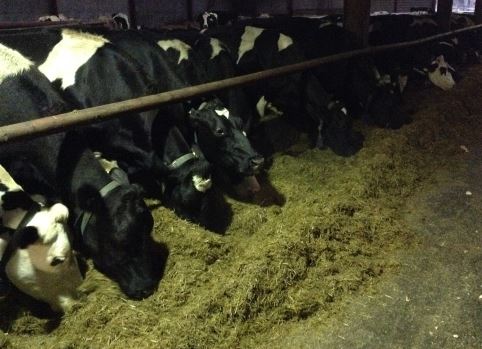



Winter Ration Consistency Vital to Maintain Performance
UK - Silage consistency should be ensured through the winter to maintain yields, with farmers advised to monitor for tell-tale signs that things need changing.Furthermore, having the "right" ration is also important, advises a Rumenco commercial nutritionist.
“Grass silage is a key component for many dairy cow rations, and this is a very difficult inclusion to manage,” warns Dr Alison Bond.

“Large variation in silage quality can be seen year-on-year, and even throughout the season due to different cuts and as a result of storage challenges. This can in turn massively impact intakes and ultimately performance. “
Reports from silage analysis this year, has shown that overall quality is mixed and is generally lower than last year.
“Ultimately, grass silage is only as good as the sward it’s taken from, and the conditions under which it’s harvested,” adds Dr Bond.
Often when a ration is lacking there will be tell-tale signs that something is not right. In this instance, it’s important farmer regularly monitor indicators and work alongside a nutritionist to manage this accordingly.
“However, once a ration is working, minimise any changes to guarantee consistency,” Dr Bond advises.
Allan Alston, who milks 320 Holstein Friesians, near Brechin in Angus recognised a major signal that he need to make a change to his ration four years ago, and it was after this that he moved to feeding XP, Rumenco’s fermented yeast.
“That particular year, our silage was very high in fibre, and the cows were producing cud balls as a result. We were also having an issue with displaced stomachs. After consulting with SAC and our nutritionist and making some changes to our ration, including moving to feeding XP, we haven’t experienced those problems since.”
Mr Alston is also seeing great results in the parlour. “Yields run at about 9,200 litres, with our bactoscan remaining consistently low. Importantly, our Somatic Cell Count (SCC) is also low, putting us in the premium band.”
Feeding a TMR ration, Mr Alston includes grass silage, and barley - both home-grown; a 22 per cent protein blend; brewers grains from two local distilleries; and XP. “We also include potato waste when the price is right, and feed an 18 per cent dairy nut in the parlour,” he adds.
“During the summer we buffer feed the cows with silage and XP, and we did have a brief period last summer when we ran out of XP. We quickly started to see cud balls reappearing in the trough again, so we rapidly got some XP back in stock to rectify this, which it did.
“Since seeing the negative impact when fermented yeast is removed from our ration, I’m scared to stop using it, as I know the problems we had before introducing it.”
Mr Alston breeds his own replacement heifers and also takes the bull calves through to finish as barley beef on another unit. “We have also included XP in the TMR ration the bulls are fed, and since the introduction, we have seem improvements in foot health.
“I’m aware there is a variety of yeast products on the market, however, I’ve chosen to feed fermented yeast as its ready to use for the cow, and a reliable product. We find XP easy to handle and feed – it does the job and works for us.”
Mr Alston concludes by saying, “If the ration works, why keep changing it; stick with it.”
TheCattleSite News Desk


